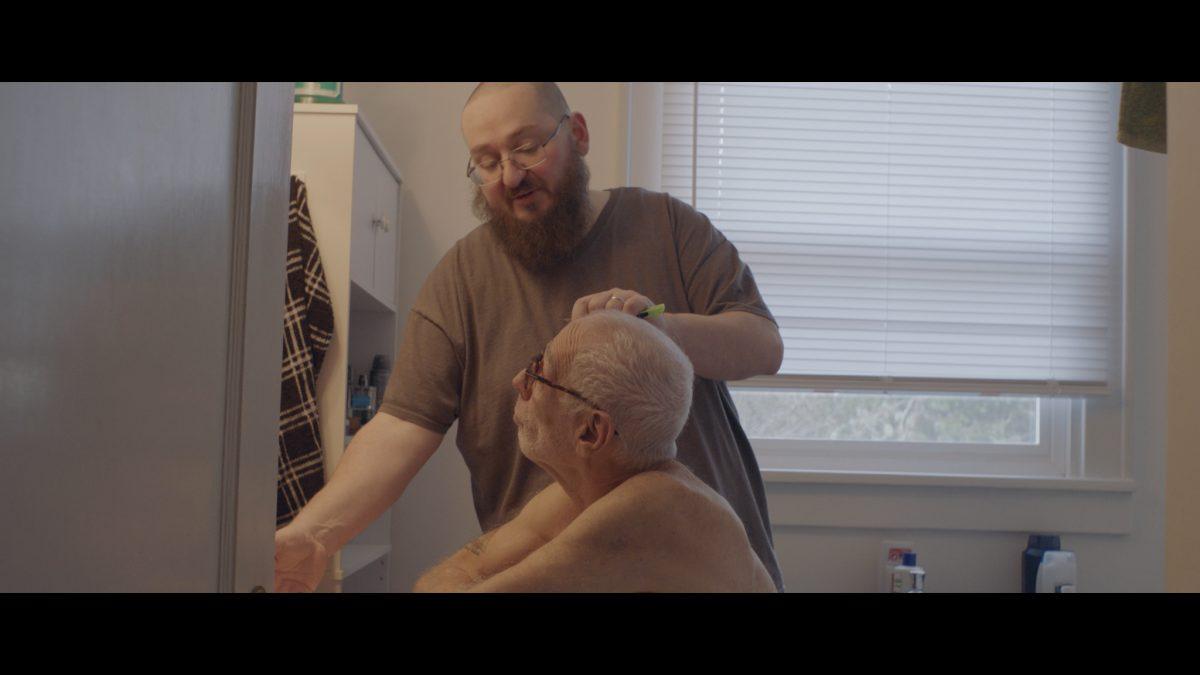
Shown at the 2023 True/False Film Fest, “Man On Earth” follows Robert “Bob” Rosenzweig in the final week of his life.
Content Warning: This article contains mentions of physician-assisted suicide. Parts of this article and scenes in the film reviewed cover this topic directly.
“Man On Earth” — making its North American premiere as part of the True/False Film Fest — is a deeply impactful film with a myriad of emotions. The documentary centers on Robert “Bob” Rosenzweig during the final week of his life in 2019. A terminal Parkinson’s disease patient, Rosenzweig had less than six months to live. In the state of Washington, it is legal for people who are terminally ill to self-administer lethal drugs prescribed by a physician to bring about their death. Rosenzweig scheduled his day of passing by these methods.
The documentary is directed by Amiel Courtin-Wilson. During a Q&A at the Fest, Courtin-Wilson said he has worked for many years on a project called “TRACES.” The project uses thermal cameras to film heat as it leaves the body of those who have died. Courtin-Wilson said that he reached out to 1,500 hospices concerning the project, and this is how Rosenzweig found him.
As explained by the director, Rosenzweig called Courtin-Wilson and said that he would participate in “TRACES” if Couritn-Wilson would live with him for the last seven days of his life to make the film.
The film created is strikingly beautiful. It opens with an inventive black-and-white shot of a human figure falling. Cutting to a close-up of Rosenzweig, the audience is given a darkly comical opening to the film.
“And that’s what my new philosophy in life is — f*** it,” Rosenzweig said.
From there, the audience is taken on a beautiful ride. With cinematographer Jac Fitzgerald at the helm, the audience is privy to a film full of close-ups on Rosenzweig. These close-ups show the confined nature of Rosenzweig’s life with Parkinson’s, and emphasize significant objects in his life.
Rosenzweig led a fascinating life. He designed bathrooms for some big names including Elton John and Janet Jackson. When he was 15 years old, he ran away from home for four days to go to Woodstock. He played guitar and mentions participating in jam sessions with the Ramones, meeting Blondie and frequenting CBGBs. His room was filled with guitars, and Rosenzweig played music trivia with his Amazon Alexa during the film.
Most important to Rosenzweig was his family, Jessie “Jess” Rosenzweig, his son and caretaker, Quentin Rosenzweig and Pamela Rosenzweig. Pamela was one of Rosenweig’s ex-wives with whom he symbolically re-engaged before his death. Pamela has cancer, and it is heavily implied that she is terminally ill. Some of the most touching scenes are Rosenzweig’s interactions with Pamela where they say they will be meeting again soon.
Perhaps the most heart-wrenching scene is Rosenzweig’s final goodbye to his son Quentin. His son did not come during the day of the procedure because he did not feel that he could handle it. His last goodbye is over the phone, captured in a scene where Rozenzweig falls to the ground crying.
The film is a testament to Rosenzweig’s humanity in the face of death. “Man On Earth,” while filled with sadness, is also filled with numerous moments of levity. Throughout the film, Rosenzweig makes witty, crass jokes with those around him. The film is full of repeatable one-liners.
The film is brilliantly put together partially thanks to the crew. Oscar award winner Robert Mackenzie was behind the sound design, and Nicolas Becker, a BAFTA and Oscar winner, wrote the music. The film was edited in part by Oscar-nominated editor Peter Sciberras.
Despite the film’s profound nature, it raises ethical questions as the last moments of Rosenzweig’s life are shown on screen. Courtin-Wilson explained during the Q&A that Rosenzweig had requested that they include the film of his death.
“It would be disingenuous to say that all of Bob’s friends and family were entirely on board,” Courtin-Wilson said. “But Bob was utterly staunch from the get-go that he wanted us there for his final breath.”
Though Rosenzweig gave his consent for his death to be filmed, it seems almost out of place in a film that had handled the subject matter very delicately up until this point.
Rosenzweig was very accepting of his circumstance. He had a party with his friends and family to celebrate his life the day before the procedure. During a scene in the film, Rosenzweig looks into the light of a projector while sitting on a stage. Looking into the light, Rosenzweig gave his advice to the audience.
“Keep your humanity, keep your dignity and be happy with your life,” Rosenzweig said.
Edited by Savvy Sleevar | [email protected]
Copy edited by Grace Knight